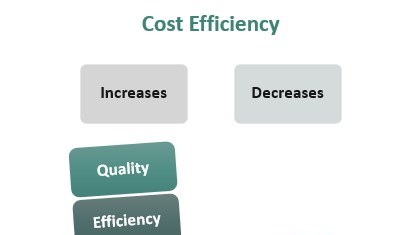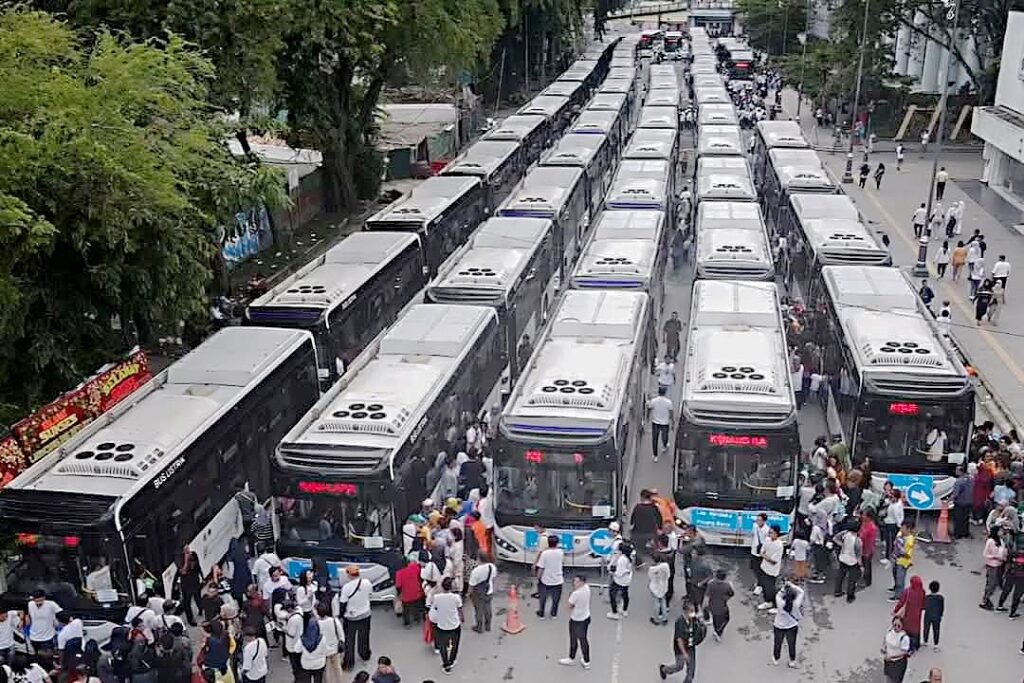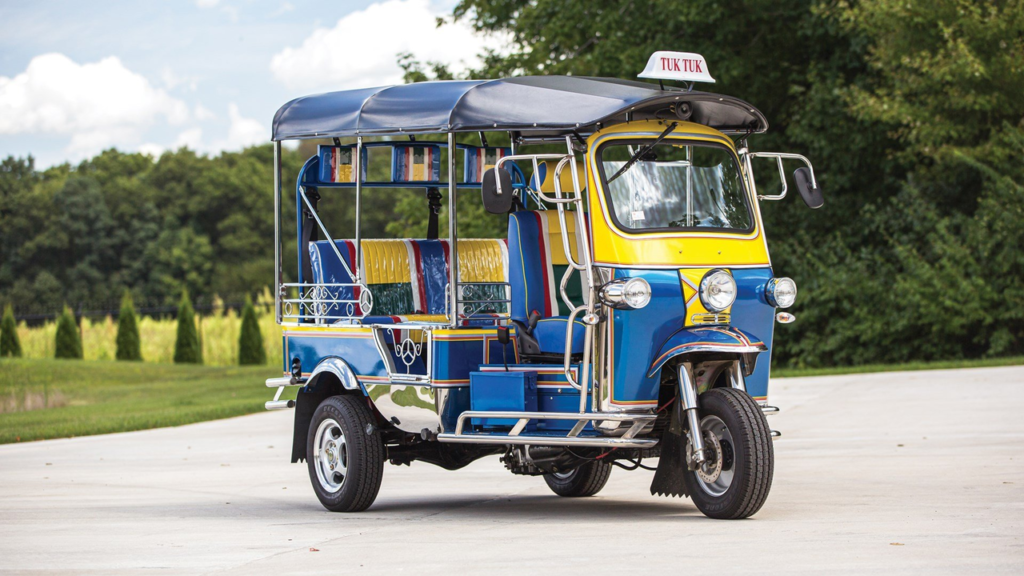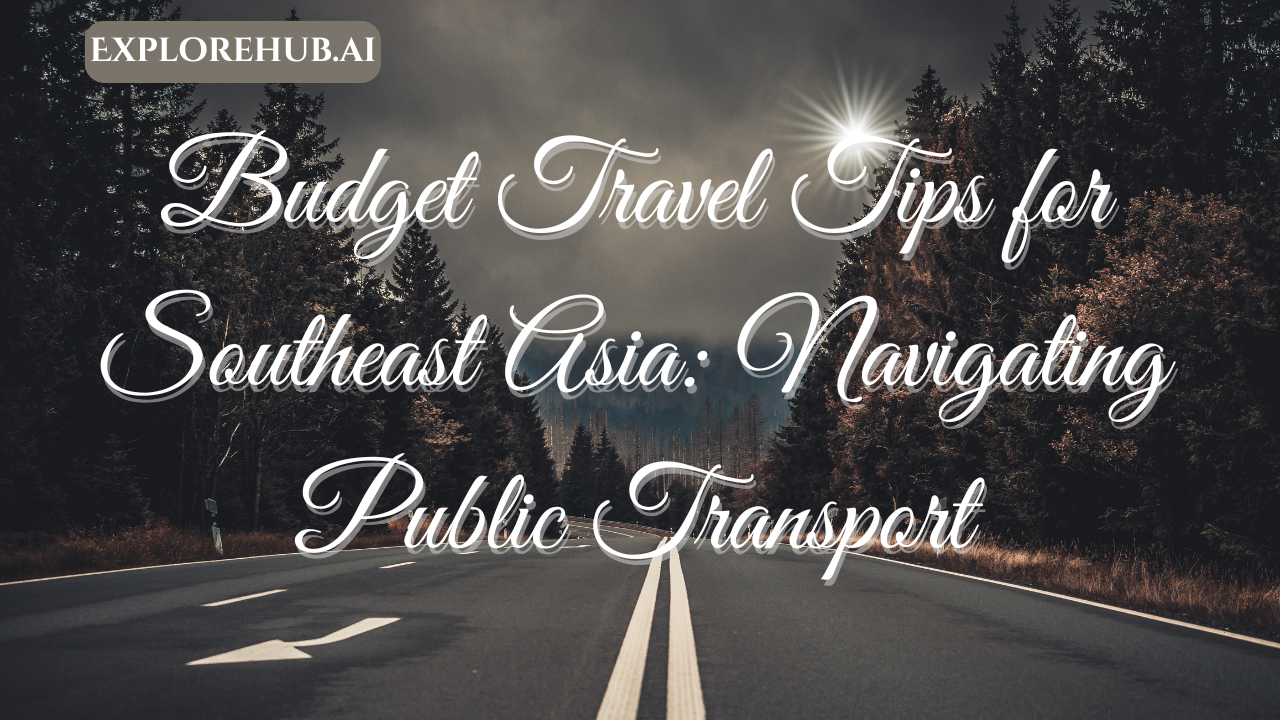Southeast Asia is an ideal destination for budget travellers. With its rich culture, stunning landscapes, and affordable prices, it’s no surprise that the region attracts millions of tourists every year. But navigating public transport can be a game-changer for those looking to maximize savings. Whether you’re hopping between islands or exploring bustling cities, understanding the ins and outs of local transport systems can save you money and offer a deeper glimpse into daily life.
Table of Contents
Why Choose Public Transport in Southeast Asia?
Cost Efficiency

Public transport is by far the most affordable way to get around Southeast Asia. A bus ride in Bangkok might cost less than a dollar, while train journeys across Vietnam are incredibly cheap compared to private taxis or flights. By choosing public transport, you can stretch your travel budget further, leaving more for experiences like food, tours, and souvenirs.
Local Experience

There’s something magical about sharing a bus with locals or watching a city unfold from the window of a train. Public transport immerses you in the culture, giving you a firsthand look at how people go about their day. It’s a genuine experience that private transport often can’t match.
Overview of Public Transport Options
Buses

Buses are a staple across Southeast Asia. Local buses are ideal for short trips, while intercity buses—including comfortable sleeper buses—are perfect for longer distances. For example, sleeper buses in Vietnam provide reclining seats, making overnight travel both affordable and convenient.
Trains

Trains are a lovely and peaceful method to travel. Thailand’s train system connects major cities, and Vietnam’s Reunification Express provides breathtaking seaside views. Choose second-class tickets for a cost-effective yet enjoyable vacation.
Tuk-Tuks and Rickshaws

Tuk-tuks are synonymous with Southeast Asia. They’re a fun way to explore cities, though prices can vary. Always negotiate fares beforehand to avoid surprises.
Ferries

For island-hopping, ferries are a must. Whether you’re in the Philippines or Thailand, ferries are an affordable way to explore islands. Check schedules in advance to plan your trips efficiently.
Ride-Hailing Apps

Apps like Grab and Gojek make navigating cities easier. They’re often cheaper than taxis and provide transparent pricing, so you don’t need to haggle.
Tips for Navigating Public Transport
Research in Advance

Knowing the routes, schedules, and costs can save you a lot of hassle. Apps like Rome2Rio and Moovit are great tools to plan your journey.
Learning the Basics of Local Language

Simple questions like “How much?” and “Where is the bus stop?” can go a long way. Locals appreciate the effort, which might help your relationships go more smoothly.
Safety Precautions

Keep your belongings close, especially during rush hours. Be mindful of pickpockets, and avoid overly crowded vehicles if possible.
Be Prepared for Delays
Public transport in Southeast Asia isn’t always punctual. Use the extra time to read, people-watch, or plan your next destination.
Budget-Friendly Destinations and Their Public Transport
Thailand

Bangkok’s BTS Skytrain and MRT Metro are efficient and affordable. For riverside attractions, long-tail boats are a unique option.
Vietnam

Hanoi’s buses are cheap and reliable. The train journey from Hanoi to Sapa offers breathtaking views.
Indonesia

Jakarta’s commuter trains are budget-friendly, while Bali offers shuttle buses catering to tourists.
Advantages of Budget Travel in Southeast Asia
Affordability

Your dollar stretches much further in Southeast Asia, making it a top choice for budget-conscious travelers.
Authentic Experiences

Using public transport lets you connect with locals and experience daily life in an authentic way.
Environmental Benefits
Public transport reduces your carbon footprint, making your travels more sustainable.
Common Challenges and How to Overcome Them
Language Barriers
Translation apps and visual aids can bridge the gap when words fail.
Overcrowding
Travel during off-peak hours to avoid the rush. If that’s not possible, patience is your best friend.
Lack of Information
Reliable sources like online forums or local tourism offices can be invaluable.
Also visit:
Plan Your Adventure: Top Hiking Trails in Colorado for Weekend Getaways
The Most Scenic Top Hiking Trails in Colorado for Stunning Views
Explore Beyond Rome and Venice: Hidden Gems in Italy
Hidden Gems in Italy: Your Guide to Offbeat Adventure
Hidden Germs in Italy: Unique and Undiscovered Places
The Best Beaches in Florida for Nature Lovers
Conclusion
Navigating public transport in Southeast Asia can be challenging, but it’s also incredibly rewarding. Not only does it save money, but it also allows you to immerse yourself in the local culture. With a bit of preparation and an open mind, you’ll find public transport to be an essential part of your Southeast Asian adventure.




